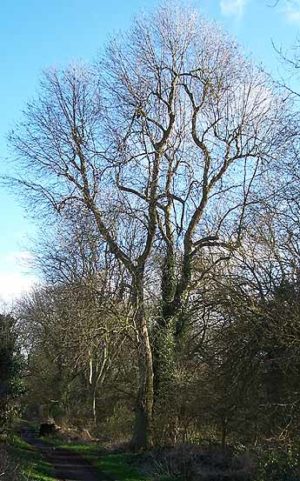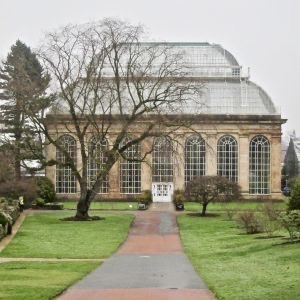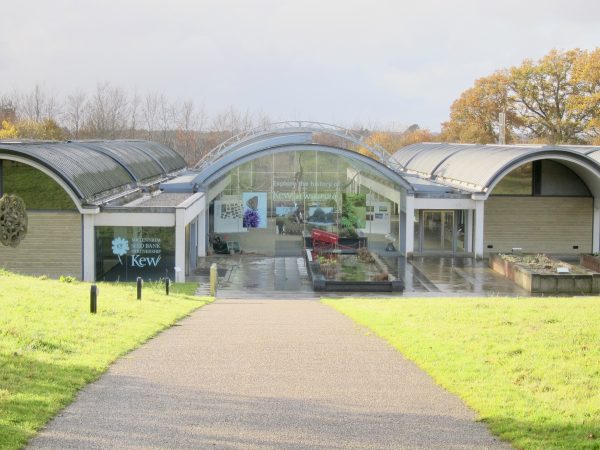Last tree standing ?

Just as many animal species are threatened with extinction, so are many species of tree. In fact, one estimate suggests that up to a third of tree species are under threat - that is more than 17,000 species. This equates to more that the number of endangered mammals, birds, reptiles and amphibians put together. In 2021, the IUCN (the International Union for the Conservation of Nature) produced a report on some 58,497 tree species which identified 17,510 species as being threatened (and 142 extinct in the wild). In Mauritius, some 57% of tree species are at risk of extinction!
Ideally, no single tree species should be lost, a single species can be an integral part of an ecological network. Its loss could result in the disappearance of many species and even an ecosystem collapse. Some tree species are now represented by single numbers of specimens. The ‘lonesome palm’ (Hyophorbe amaricaulis) is probably the last surviving member of its species. It is to be found in a botanic garden in Mauritius. It is an old, damaged and spindly specimen. It has problems with fruit formation; each of its fruits contains but one seed and the seeds are difficult to germinate (even the botanists at Kew could not persuade them to grow).
The best approach to saving vulnerable trees is to protect their natural habitats. This might mean controlling grazing by herbivores, or banning logging in sensitive areas. Sometimes a change in cultivation techniques can make a difference. The Lansan Tree produces a valuable, aromatic resin. It is endemic to the Windward Islands and its fleshy fruits provide for native pigeons and other wildlife. The resin is collected (tapped) from the tree by slashing the bark every one-to-two weeks. However, over-tapping for the resin can lead to the trees becoming infected with pathogens, then rotting, or subject to termite attack. The pathogens may spread to untapped trees. Unregulated tapping and conversion of land from rainforest to agriculture have led to Lansan Tree populations all but disappearing in places. On Saint Lucia, where there is a large but threatened population of Lansan Trees, there is hope after the introduction of a sustainable resin harvesting technique. This technique does not damage the tree but still allows a good yield of the resin. This, coupled with training of licensed resin tappers should protect the trees.
Some species have reduced populations because their pollinators have been lost, so fruit and seed production has ceased. Other species have separate male and female plants (dioecism) and the small populations that remain are represented by only one sex. This was true for the catkin yew population in Hong Kong, where all the trees were males.  A global search found a female specimen in the Royal Botanic Garden in Edinburgh. Cuttings from the Edinburgh tree have now been planted in a managed site in Hong Kong. Hopefully when they flower, fruit and seed production will occur; but it may be a long wait for the young trees to reach sexual maturity. Another species, the oleander podocarp (Podocarpus neriifolius) has been nursed back to viability by similar techniques.
A global search found a female specimen in the Royal Botanic Garden in Edinburgh. Cuttings from the Edinburgh tree have now been planted in a managed site in Hong Kong. Hopefully when they flower, fruit and seed production will occur; but it may be a long wait for the young trees to reach sexual maturity. Another species, the oleander podocarp (Podocarpus neriifolius) has been nursed back to viability by similar techniques.
Some rare and isolated trees produce seeds but getting them to germinate is another matter. Many seeds enter a state of dormancy and have extremely specific requirements for them to germinate and grow on. In many cases, their needs are simply not known. The seeds may need a particular temperature regime, or exposure to cold, fire, smoke or light of a particular wavelength. Some seeds may need to travel through the gut of a particular animal before they will germinate. Sometimes, scientists have used to embryo culture. The embryonic radicle (root) and plumule (shoot) is extracted from a seed and then grown in a sterile nutrient culture medium. This technique was used at Kew with the ‘lonesome palm’ as attempts to grow its seeds had failed. Embryo culture resulted in plantlets forming but after a while their roots turned brown and the young plants died.
There are success stories. A Cypress species Widdringtonia whytei, was reduced to a few trees in Malawi, as a result of illegal logging for timber. Many seedlings have been planted on Mount Mulanje and a good number of these have survived.

Entrance to the Millennium Seed Bank
When and where seeds are actually available, they can be dried or frozen (cryopreservation) and placed in seed banks, for example the Millennium Seed Bank at Wakehurst Place. We have to hope that through various interventions, the use of seed banks, botanic gardens and arboreta that we will be able to save many rare and threatened tree species, you never know when one might be needed.
Comments are closed for this post.
